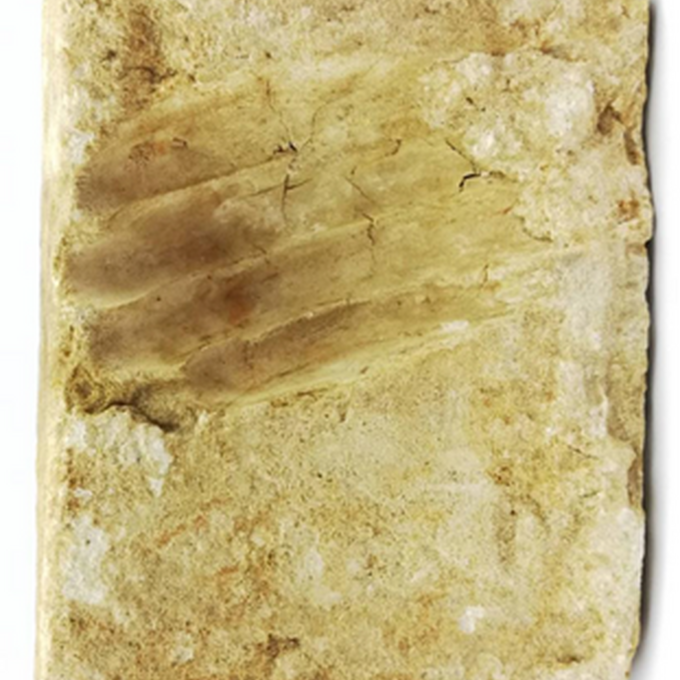Hof der dingen - A beam-shaped brick from Dune Abbey in Koksijde

Did you know that people often say Flemish people have a brick in their stomach? It’s a loving way to call out the fact that Flemish people have a tendency to build or renovate houses, instead of renting.
Flanders’ love affair with bricks began in the 13th century, when we started producing these bricks ourselves. The material had already been known in Northwestern Europe for several decades and began to gain importance in our region as well.
One notable example is the Dune Abbey in Koksijde, which was primarily constructed with bricks. The Abbey has a collection of over 600 different types of bricks, with more than 1,200 bricks digitally catalogued for posterity. Not only the sheer quantity of bricks, but also the variety of shapes and unique features make this collection stand out. Some of these bricks have distinctive painted motifs, carved inscriptions, and even paw prints or human footprints embedded in them.
Take a closer look at the example on display here – it’s a beam-shaped brick, where you can still make out the indentation left behind by a worker’s hand. This indentation was made while pulling a clump of clay from the soft material and was later filled partially with mortar. You can still spot the fingerprints and light traces of handling on the sides and bottom as well.
Unfortunately, the history behind some of these bricks also sheds light on a darker side of the industry. Child labour was relatively common, especially in the brick-baking process. Several bricks on display at the museum bear the footprints of children, estimated to be as young as 3 or 4 years old.
It's incredible how each brick, no matter how small, tells its own story – from the craftsmanship to the harsh realities of the time.